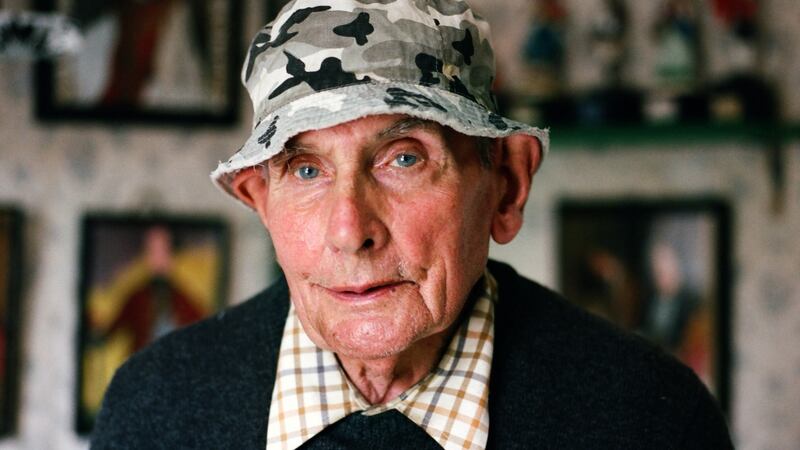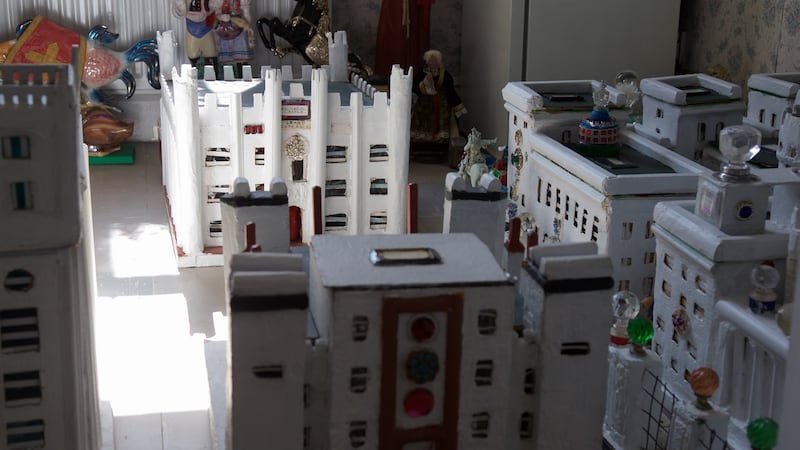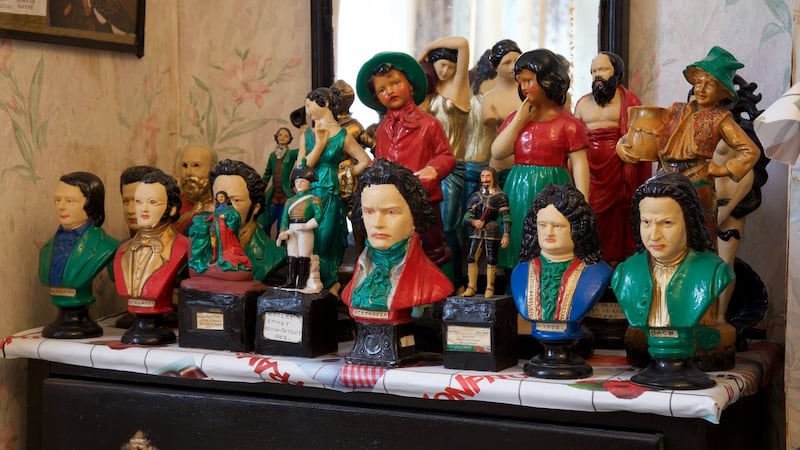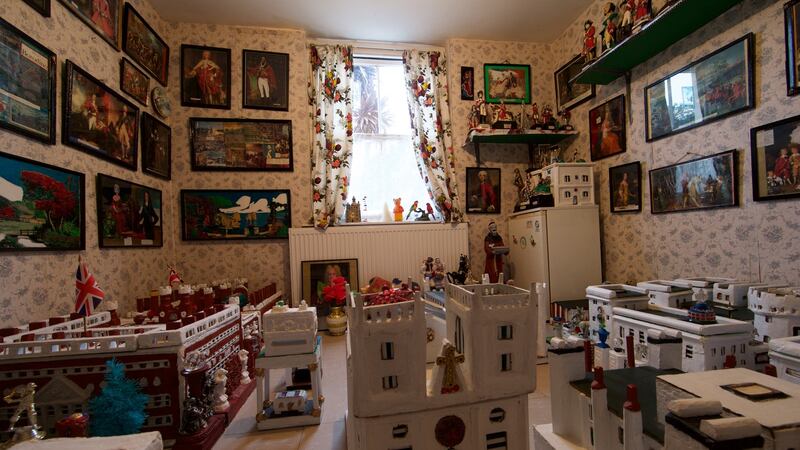A few miles south of Naples is Pompeii – a town suspended in time after it was strewn with ash from the eruption of Vesuvius in AD 79 – where the private lives of thousands of Romans have been made public.
Away from the sweltering foothills of Vesuvius, much closer to home, is a different Pompeii. In the shadows of London’s iconic Trellick Tower is a row of terraced, social housing where Gerald “Gerry” Dalton lived.
Dalton moved to London from Athlone in 1959, when he was 24 years old. Like thousands of other Irish emigres, he picked up odd manual labour jobs, working as a porter in Paddington and Victoria stations, in factories and in kitchens. When he retired, however, he devoted 30 years of his life to creating what he dubbed “Gerry’s Pompeii.”
The walls of his tiny flat are plastered with paintings and the floors covered with models of iconic British buildings – Buckingham Palace and St Paul’s. In his bathroom sits a model of Westminster Abbey. There are busts of Queen Victoria, Princess Mary, a statue of Charlie Chaplin. On the walls are images of the wives of Henry VIII. Figurines of historical figures are carefully placed throughout the small space; in the bathroom there is a reproduction of the Last Supper.
It is hard to identify a thematic consistency beyond an obvious and obsessive interest in the personage of history – mostly European, Irish and British.


Irish artist Dorothy Cross has likened the effect to a Hieronymus Bosch painting made physical, replete with tiny and eccentric detail. It is reminiscent, too, of Antoni Gaudí's Sagrada Família in Barcelona – smaller in scope and ambition (though there is an overwhelming sense that would not be the case were Dalton not limited by the confines of social housing), but with the same freneticism and abject disavowal of minimalism.
Outside his apartment, in the small garden, are rows and rows of concrete models, about a foot high each; like tiny, gaudy Teracotta Warriors. Cromwell, Princess Sophia and the Flavian emperors are all depicted, each with a name tag, grey-faced with white and black clothing and signature red rings around their eyes. One stands out among the towering names of history, labelled “Gerry, gardener”.
Cross has compared “Gerry’s Pompeii” to Banusci’s studio in the Pompidou Centre in Paris, or Francis Bacon’s in the Hugh Lane Gallery – a place that celebrates where life and art meet, where Dalton both lived and created.
Despite leaving school at 14, possessing little formal education and no artistic training, Gerry Dalton’s highly attuned sense of history is apparent. We do not know if Dalton, who died on August 9th last year, ever visited Pompeii – but his observation that what he had created in this small flat in Westbourne Park shared something with an Ancient Roman town is an astute one.
The work symbolises his Anglo-Irish life, an experience shared by thousands in London before him and since. Sculptor Richard Wentworth wrote: “For me Gerry Dalton is a supreme example of community … a wonderful direct inheritance from the legions of Irish people who built and maintained London. Without Gerry’s forebears there would be no canals, no railways and no sewage lines.”


Before he died at the age of 83, Dalton was known as an intensely private and modest man. But it was this private life that gave him space to fabricate this entire world with “almost devotional” conduct, says Wentworth. “In over 50 years in London I have never encountered anything so unusual and so complete,” he added.
Wentworth is not the only high-profile name who has celebrated Gerry's Pompeii. Since his death a group of campaigners and Dalton's family, with the support of the Greater London Authority, lobbied to raise funds to buy the house off the local housing association, wishing to preserve the site as a cultural museum. Pulp's Jarvis Cocker, former Tate director Nicholas Serota, and former Labour MP and director of the Victoria & Albert Museum Tristram Hunt are among those calling for his Pompeii to be preserved.
Initially the group was successful and with support from the Arts Council, the Museum of London, the National Trust and others they raised £270,000 of the £500,000 required to purchase the home off the Housing Association. But since the pandemic and lockdown, it emerged that large amounts of Dalton’s artwork have been moved from his home by his family members. His supporters are dismayed.
Despite continued calls from campaigners to preserve the space and purchase the apartment, any funding already offered is contingent on the family’s support. Campaigners are intent on proving that Gerry’s Pompeii is something worth saving.
And it is a remarkable feat – a physical rendering of an Irish immigrant's experience; the private made public; and where art interacts with life. But as Wentworth wrote, Gerry Dalton represented something even more: "the sort of engaged and caring spirit who helps to hold cities together." gerryspompeii.com













